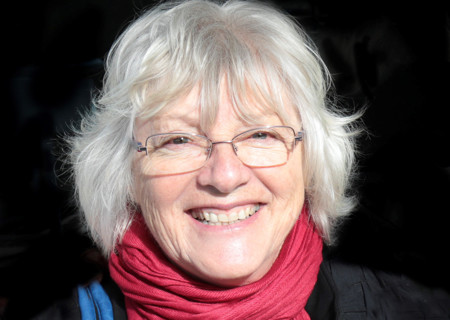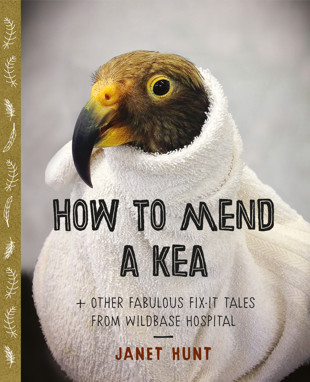1. Now the book is back from the printer, are you pleased with it?
Yes! The cover looks great and is attracting a lot of interest but, more than that, whenever I show off my advance copy, it’s what’s between the covers that has people buzzing. The photographs look great and tell their own story. And people can relate to the stories, especially to the creatures such as kereru and ruru that we all see around us and occasionally rescue, to the rarest, most special animals that most of us will never encounter in our daily lives.
2. What did your research involve?
In particular, it entailed spending time at Wildbase, looking over the shoulders of the vets and technicians as they worked through a day, watching recent arrivals being ‘worked up’ and surgeries as well as the twice-daily rounds of care, cleaning, feeding, medicating. And then I followed up by using the Wildbase animal databases to get my primary material and in some cases, contacted people in the field who had found the injured animals.
3. The book is full of the most remarkable case studies of injured and ill animals. Which is your favourite, and why?
That’s like asking to choose a favourite child! Each is special in its own way. I loved the kea, of course, but also the little whio, making its sad whistles, or the floppy tuatara or the lost kaka. And then there was a succession of small kiwi who were in strife. So cute! And Cadbury the galah, who (note ‘who’ because he’s definitely a personality!) is not a native but was in for treatment and was pretty cool.
4. How did that cheeky kea come to be the cover boy?
Kea was in the final stages of rehabilitation after a very long and gruelling period of treatment (for all concerned). He was in his own special room and when you looked through the window in the door, he played peek-a-boo from one side to the other of the shrubbery that was in there for him to climb. He was, no doubt, not really playing peek-a-boo but checking out who this might be and whether they represented any danger! I helped set up another display area for him — but he wasn’t in it for long before he was returned to base for trying to destroy the trim around the windows. Endlessly curious.
5. Do you ever wonder what he is up to now?
Certainly. Especially over winter, when it’s been snowy and stormy in his neck of the woods. I imagine he will be OK and humans will be looking out for him (he hangs out at West Arm on Lake Manapouri, in the vicinity of the power station) but I believe he’s quite young so it’s possibly his first winter.
6. What’s one new thing you learnt while working on this book?
There were lots and lots of little things, but one thing that was definitely new was being given a kiwi chick to hold and crop-tube — feeding the tube down its neck into its stomach so it could be given fluids and food. It was a bit scary but I was well supervised!
7. The staff at Wildbase seem pretty special. Are they a rare breed?
Awesome. I was so impressed by the teamwork. Every time a creature was being treated there were so many hands, holding it, carrying out whatever procedure, attending to technical things such as supplying anaesthetic or carrying out radiographs (X-rays). There are great communications systems, but above all, it’s the dedication and caring of the staff that really stays with me, not just for the patients but for each other and for the many trainee vets and technicians who come through.
8. How difficult is it to write for children?
Writing non-fiction for children is a mix of trying to keep the text lively at the same time as deliver information. I’m very aware that children, like adults, now have access to so much primary information themselves, so the challenge is to provide a complete and unique package, keeping the writing vital and interesting at the same time as being aware that they may go on to consult and work with wider resources themselves. To direct them towards that, in fact.
9. What’s one thing you hope people will take away from readingHow to Mend a Kea?
Wildbase is an amazing place and doing an incredible job. The hospital is, however, the proverbial ambulance at the bottom of the cliff. For many of the patients they see there must be countless other injuries and deaths out there in the wild, in the farmed countryside and around our coasts, that go unseen and unattended. It’s up to us all to do the utmost to try to prevent accidents and injuries as much as we can. People are doing some remarkable things with predator control and provision of safe places but equally there are still so many preventable injuries and deaths.
10. What are you reading at the moment?
I’ve just finished Thomas Pakenham’s The Company of Trees, which is wonderful and inspiring. And for a complete contrast, I’ve moved on to re-reading an oldie but goodie, Joyce Cary’s The Horse’s Mouth (fiction). What a rascal that Gulley Jimson was! At the same time, he has refreshing and thought-provoking takes on life and art. Great.


